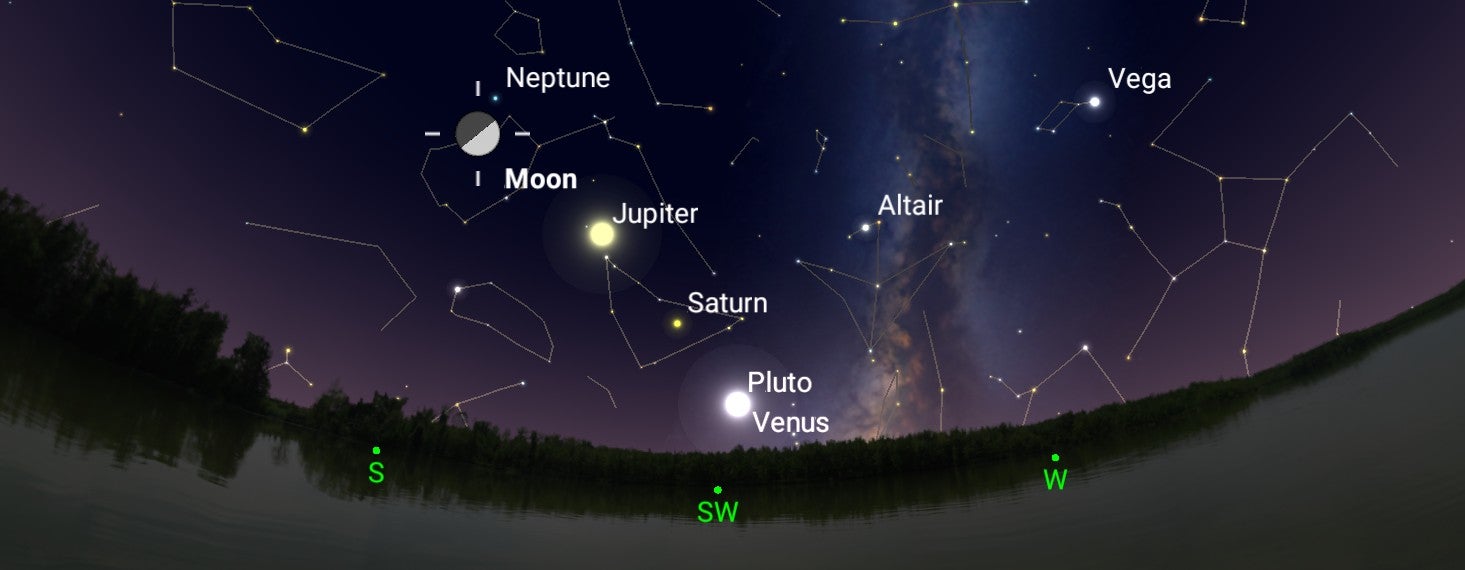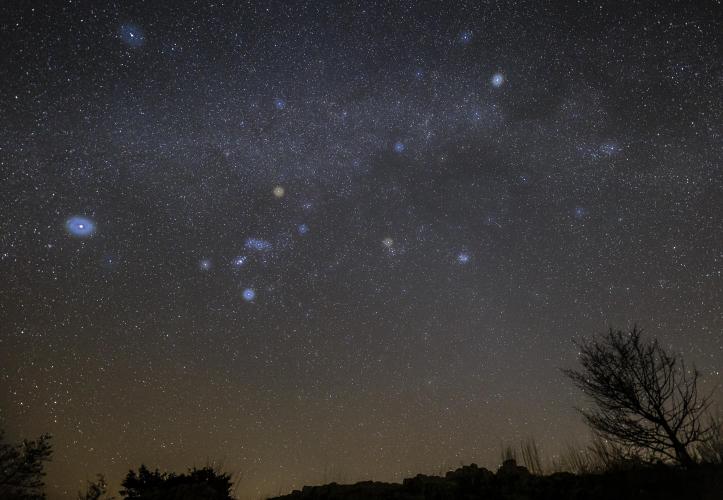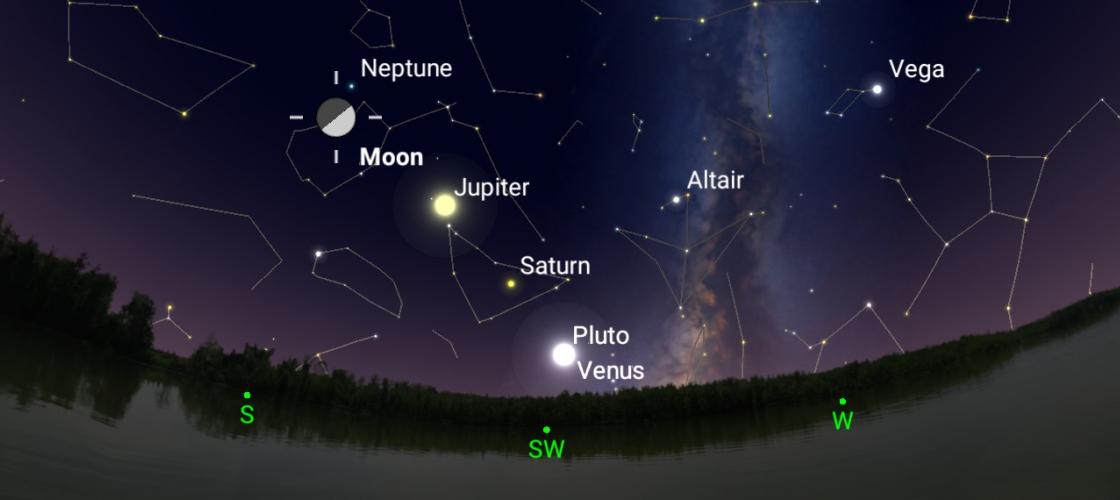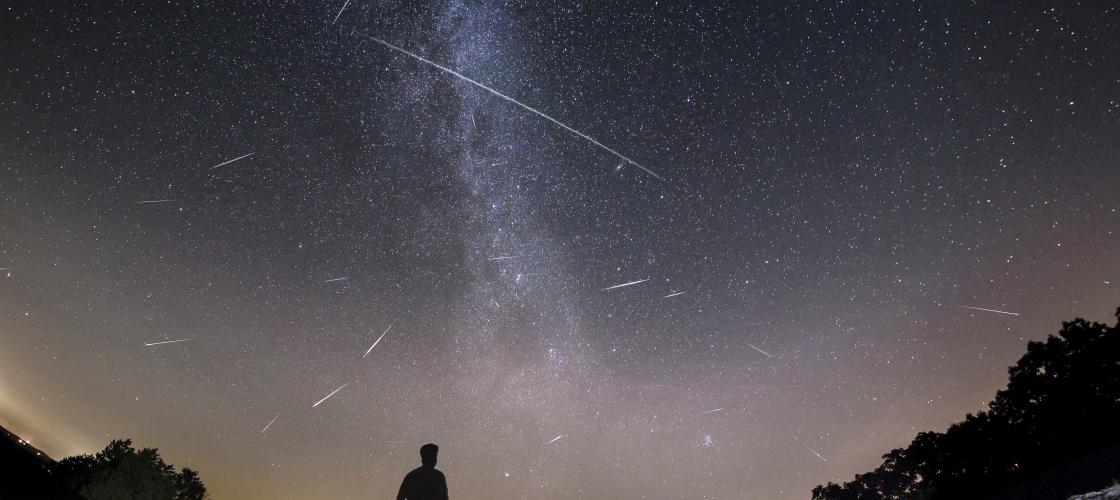
Want to party with the stars for a special show? December’s night sky features meteor showers, constellations and planets to view. All you need is a dark sky, wide-open space, and some warm layers.
Geminid Meteor Showers
The Geminid meteor showers are a must-see show. More than 50 showers an hour may streak by during optimal times and conditions. You can see them from December 4 though December 17th, with peak viewing from the evening of the 13th into the morning of the 14th. The Geminids are formed from rock material that takes longer to burn up than icy debris. They also move slower which allows for easier viewing.
Watch for bold, bright bursts radiating from the Gemini Twins constellation, near the stars Pollux and Castor. Gemini rises earlier so you can start viewing around 9:00 p.m. The moon will be three-quarters full in mid December, which may make things harder to see but allow for darker skies in the pre-dawn hours.
Meteor showers are best viewed with just our eyes recommends MDC's astronomy guru, Dan Zarlenga. Here are some tips from Dan on equipment and viewing:
"Sometimes larger objects can look better in the wide field of binoculars than the more narrow view of a telescope. Many astronomers still own binoculars even if they have telescopes. Each has their own use. There are even elaborate mounts made specifically for stargazing with binoculars.
On the other hand, telescopes, or even binoculars are the last things you want for viewing meteor showers. They are best appreciated with the unaided eye, a reclining chair with neck support, and a wide-open view to increase your chances." You can see Dan's night sky photography in the gallery below.
Many conservation areas offer wide vistas and are open from 4 a.m. until 10 p.m., accommodating before sunrise and after sunset viewing. Some areas also offer camping. Check regulations for each area and whether you need a special permit before heading out.
Planets, Moons, and Constellations
In early December, you can view three planets near a waxing crescent moon.
On December 6th, the crescent moon will appear near Venus within 3 degrees in the early evening sky. Venus is the brightest planet.
On December 7th, the crescent moon and Saturn are about 5 degrees apart. Saturn is a fainter planet with a gold color. If conditions are right, you can see its rings with a telescope during twilight, and may even see its largest moon, Titan,
On December 8th, the moon approaches close to Jupiter, our largest planet. With clear conditions and a telescope, you may be able to see its four largest moons.
And on December 10th, look for the moon, Jupiter, and Saturn forming a nice row in the sky.
Also look skyward this month for a full moon on December 18th, and the constellations Mars, Orion the Hunter, Taurus the Bull, and Pleiades, the Seven Sisters.
Prepping for a Night of Meteor Spotting and Stargazing
- A blanket or sleeping bag spread on the ground can be a nice viewing location. A reclining outdoor lounge or camping chair is another option if you prefer to do your viewing off the ground.
- A pair of binoculars, perhaps ones you may already own, can offer a wondrous window on the universe. An ideal pair would be in the 7X50 or 10X50 range, but almost any will offer an enhanced view and allow you to see more stars than the naked eye.
- A planisphere is an excellent tool to aid in learning the stars and constellations. Several mobile apps are available to help you in finding constellations and other stellar events.
- When heading out to enjoy nature at night, always remember to dress in plenty of layers on cooler nights, prepared for at least 10 degrees cooler than the forecasted low.
- Using a red flashlight, either a red LED or a standard flashlight covered with red electrical tape, help preserve your night vision.
For more tips on discovering nature at night, check out this 2015 article from the Missouri Conservationist Magazine.












Recent Posts
























